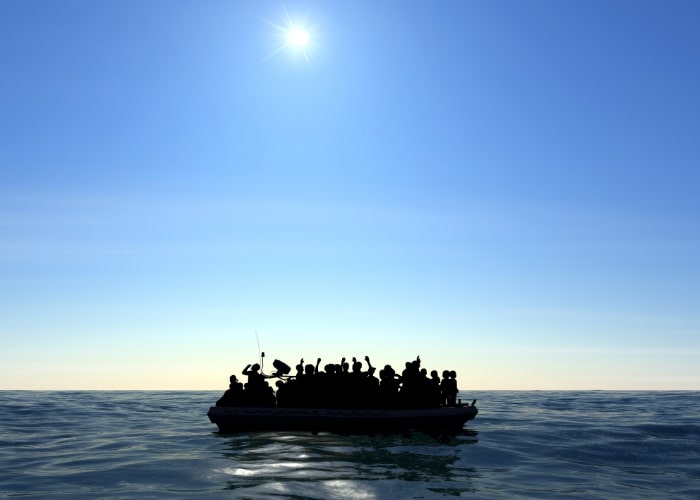MADRID – The influx of refugees in the Canary Islands is a major problem. And there does not seem to be an unambiguous solution for the time being to offer migrants a future perspective.
By talking to various refugees, the harrowing future prospects of many migrants have been outlined in the special on the migration crisis in the Canary Islands in the Spanish newspaper El País.
The numbers at a glance
In the Canary Islands, thousands of refugees are waiting, sometimes for months, sometimes even more than a year, to continue their journey to mainland Europe. In 2020 alone, more than 23,000 migrants arrived, 80% of them in Gran Canaria. Of those 23,000 migrants, 11,000 are still on the islands, 9,000 of which are adults and 2,000 minors. The three main countries of origin are Morocco (more than half), Mali and Senegal.
The number of refugees trying to reach Europe via the Canary Islands has exploded in the last two years. In 2018 it was only 1,305 people. That means, compared to last year’s 23,000, an increase of no less than 1,664%. In contrast, the number of migrants who tried to reach Spain (and therefore Europe) through Andalusia has decreased by 81% in the same two years, from nearly 53,500 to just over 10,000 people. The Spanish enclaves of Ceuta and Melilla have also seen the number of refugees fall by 49%, from 1,365 to 695. In contrast, the Balearic Islands and the towns on the Spanish mainland’s east coast have seen the number of migrants rise from 2,410 to 6,585, an increase of 173%.
Change of arrival route
In 2019, a difference could already be seen compared to the previous year in the route that the refugees followed to enter Europe. While Spain and Italy saw a decrease of more than 50% in the number of migrants, Greece saw an increase of almost 48%. So nowadays they enter Europe via the east rather than the west of the Mediterranean.
Gloomy prospects for the future
For many refugees entering Europe via the Canary Islands, the future is very uncertain. Waiting a year or more to continue travelling to the Spanish mainland is not unusual. And that time is in addition to the many months they have already been on the road from their home country.
The Spanish government is trying, with support and funding from the EU, to receive some 9,000 migrants in large refugee camps in Gran Canaria, Tenerife and Fuerteventura. In doing so, the government tries to limit the number of new arrivals and to facilitate returns to the country of origin. However, returning them is not always easy, as hundreds of refugees come from countries with which there is no return agreement or from countries to which it is very difficult to return them. The reception of vulnerable refugees is also not going smoothly. By 2020, only 2,168 vulnerable refugees were transferred to reception centres on the Spanish mainland, and the waiting time has increased to several months. Vulnerable refugees include women with children, sick people and asylum applicants.
Under pressure from the Canary Islands and the problems caused by the large number of refugees on the islands, the Spanish government is now going to speed up the flow by allowing 3,500 migrants to travel to the mainland.
2020 was not gloomy for everyone
Some 9,000 of the 23,000 refugees who reached the Canary Islands last year have now travelled to mainland Spain. This was the people who had their passport in order and were therefore free to travel on. But since December 10, the government has put a stop to this after images surfaced of migrants arriving in large numbers in provinces where severe corona measures were in place, including travel restrictions. With this flow stop, the Canary Islands will become a new ‘waiting room’ for the Spanish Ministry of the Interior, just like Ceuta and Melilla have been for years.


